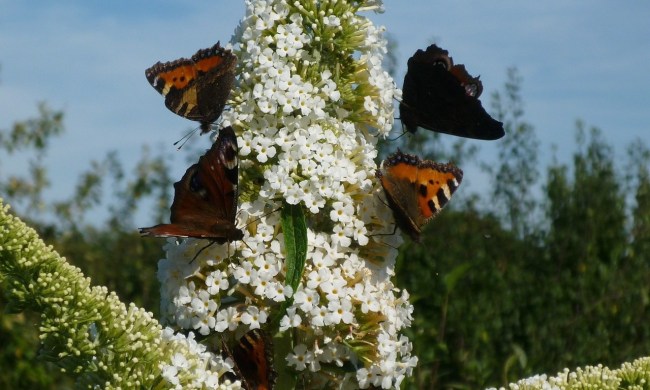
Sunflowers are iconic for their big, bright blooms. They can bring cheer to practically any home or garden, whether they’re in cut flower displays, container gardens, or traditional gardens. When can you expect to see those famous flowers? If you’ve been asking yourself, “When do sunflowers bloom?” then you’re in the right spot! This guide will answer all your questions about sunflower blooms, from when they happen to why yours might not be blooming on time.
When do sunflowers bloom?

Sunflowers typically bloom in mid to late summer to early fall. Depending on where you live and when you planted your sunflowers, you can see sunflowers as early as June or as late as September. When determining the expected bloom date of your own sunflowers, take note of when you planted them. Sunflowers bloom 10 to 13 weeks after they were planted, so use this to estimate your sunflowers’ bloom time.
Keep in mind that the weather can impact bloom time as well. Sunflowers are warm-season plants, and they will germinate and grow more slowly in cool or cold weather. Sunflowers planted further south, where the weather warms up more quickly, are more likely to bloom earlier, while more northern regions that stay cool longer tend to have later sunflower blooms. This is because an earlier spring often means an earlier planting time, and warmer weather helps speed up the seed’s germination and growth.
Do sunflowers bloom more than once?

Some sunflowers will bloom more than once, while others do not. While this primarily depends on the variety of sunflowers you’re growing, it also depends on what you mean by blooming more than once. Sunflowers that are perennials will return year after year, blooming more than once over their lifespan.
There are also branching sunflowers, which grow multiple flowers on a single stalk. However, if you’re looking specifically for sunflowers that will grow new flowers after the first ones have faded, the best way to be sure you’re getting that is to choose a variety that is labeled as a repeat bloomer or continuous bloomer.
Why aren’t my sunflowers blooming?

If your sunflowers aren’t blooming, there are a few possible causes. Sunflowers that aren’t getting enough sun won’t bloom, so pay attention to where you plant or position your sunflower. Temperature can also be a factor. Cool weather sends your sunflower the signal that it isn’t time to bloom yet, so you may need to wait for the weather to warm up or move your indoor sunflower away from drafts or air vents.
Pest damage, illness, and general poor health can also cause delayed or missing blooms. Look for other signs of pest infestation, disease, fungal infections, or nutrient deficiencies to identify and fix the problem. In general, proper sunflower care leads to reliable blooms.
Sunflowers are beautiful, bright, and cheerful. They’re also surprisingly easy to grow, so it’s no wonder so many gardeners want to bring these lovely flowers to their homes and gardens. Now that you know when sunflowers bloom and why yours might not be, you’re better equipped to add sunflowers to your collection.



